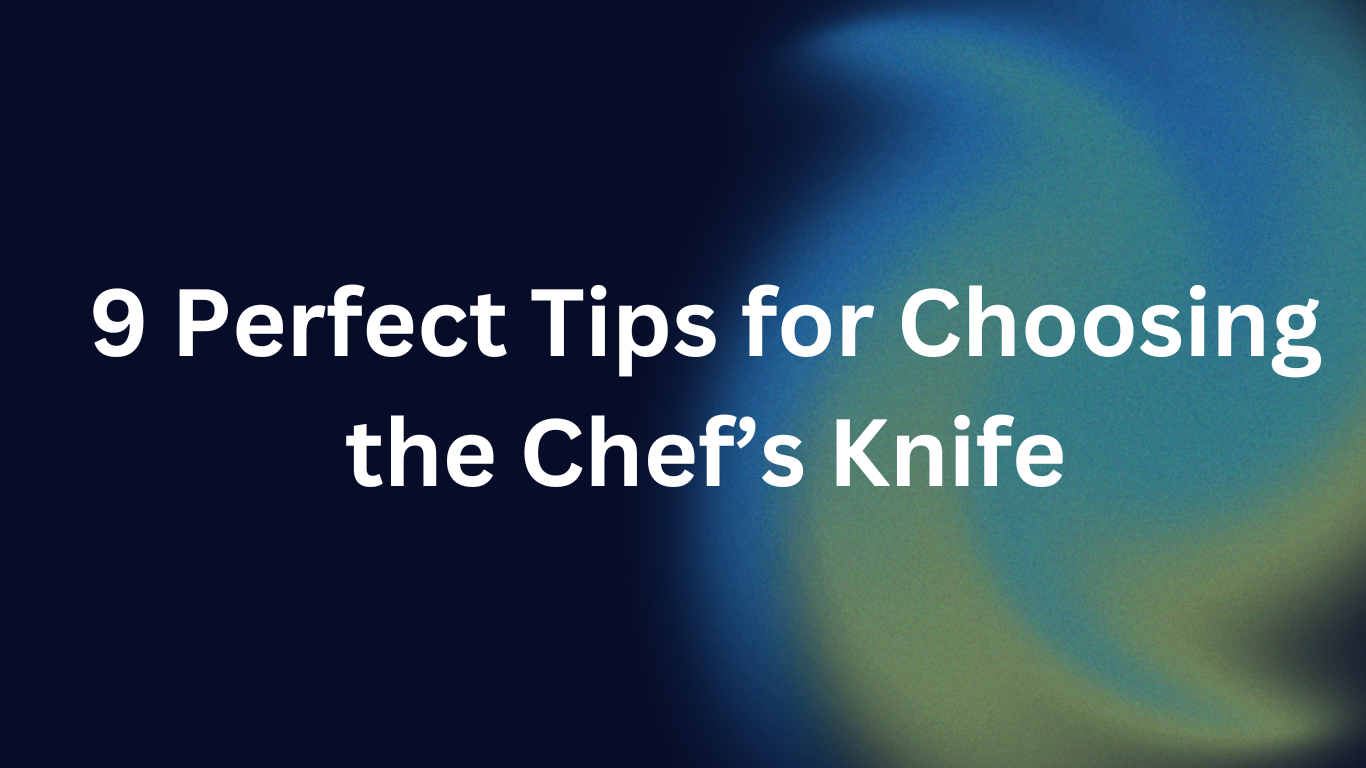
9 Perfect Tips for Choosing the Chef’s Knife
1. When selecting a chef’s knife, it’s important to consider various factors like weight, sharpness, material, and balance. It’s also crucial to align the knife with your cooking style for optimal performance. Each culinary task requires a specific tool, and a chef’s effectiveness is closely tied to the quality of their knife. Despite its simplicity, choosing a knife involves careful deliberation based on factors like budget, preferred cuisine, and personal priorities. The design of a knife reflects the creativity and intention of its maker from the handle to the blade tip. To kickstart your selection process, let’s explore the distinction between stamped and forged blades.
2. When it comes to creating blades, there are two main methods: stamped and forged. Forging a blade involves shaping the knife from raw liquid metal using a mould, resulting in a strong and durable blade that extends the full length of the knife. The sword-forging scene in Game of Thrones accurately depicts this process, with a real forger showcasing the craft. While forged blades are known for their quality and longevity, they do come at a higher price point compared to stamped blades.
Professional chef’s knives are often crafted through the forging method due to their superior strength and durability. On the other hand, stamped knives are cut from pre-existing sheets of metal, making them more affordable but less robust in comparison. It’s likely that you have handled both types of knives before, with stamped knives being more common in mass production settings.
Overall, if you’re looking for a reliable and long-lasting chef’s knife, opting for one that has been forged is your best bet.
3. Stainless steel is a common blade material found in many kitchen drawers due to its affordability and resistance to rust. However, it tends to dull easily and can be challenging to sharpen. High-carbon steel blades are more expensive but offer better edge retention and durability. Titanium blades are sharp, lightweight, and easy to handle, although they may not be suitable for cutting tough materials. Ceramic blades maintain sharpness well and provide precise cuts, but they lack the weight of traditional knives and are more fragile. Despite their limitations, a well-made ceramic knife can be a valuable tool for chefs.
4. The perception of weight varies among chefs: What may feel satisfyingly substantial to one cook could be unwieldy to another. A hefty knife is well-suited for tough root vegetables and dense meats, while a lighter one is better for chopping delicate ingredients quickly. Ideally, it’s beneficial to have both types of knives, but if you can only choose one, consider your cooking style and preferred weight. If you’re unable to physically handle the knife before purchasing, especially when buying online, make sure to research the weight of the specific brand and model. The balance of a chef’s knife can be influenced by its weight.
5. The equilibrium of a chef’s knife lies within the grasp of the holder, and can be assessed in two ways: When held with the tip facing away from the body, it should effortlessly remain straight without undue pressure. Similarly, when held perpendicular to oneself with the blade at a right angle to the arm, it should maintain a steady balance with ease.
6. Are you more inclined to chop or slice? The decision depends on a couple of factors: Do you own multiple knives? If not, what exactly do you intend to use the knife for? A slender blade is ideal for slicing, whereas a wider blade is preferable for chopping. Curved blades can swiftly cut softer foods by rocking motion, but they are generally thinner and less suitable for heavy-duty cutting tasks.
7. Japanese knives have gained worldwide popularity for their lightweight design, exceptional sharpness, and slender profile compared to Western knives. The agility and speed they offer are unmatched, but they may struggle with tougher materials like bones or dense vegetables. Nevertheless, the influence of Japanese blade-making techniques has made its way into mainstream Western knife production. As a result, some of the top chef’s knives on the market today are hybrids that blend the precision of Japanese blades with the robust manufacturing methods of Germany.
8. Proper care of your chef’s knife is essential. It is recommended to clean and dry the knife after each use. If you have purchased a high-quality knife, it should not require frequent sharpening. You can determine if the blade needs sharpening by assessing its cutting performance, such as if it cuts less smoothly or more slowly than usual. A simple test to check the sharpness of a blade, whether new or old, is to slice through a piece of paper – a clean cut indicates a sharp blade. Sharpening can be done using a stone or other metal surface.
9. Professionals often encounter varying costs when acquiring equipment, whether it is at an amateur or professional level, across different industries. Therefore, it is not surprising that chef’s knives require a greater investment compared to those intended for consumers. These knives are held to higher standards in terms of sharpness, metal quality, durability, and user-friendliness. Many culinary enthusiasts have found value in the Chef Knife Skills Course offered by Le Cordon Bleu, which covers everything from knife selection to proper handling and filleting techniques for fish. This course is designed to accommodate individuals of all skill levels and serves as a foundational guide for those aiming to perfect their knife skills.